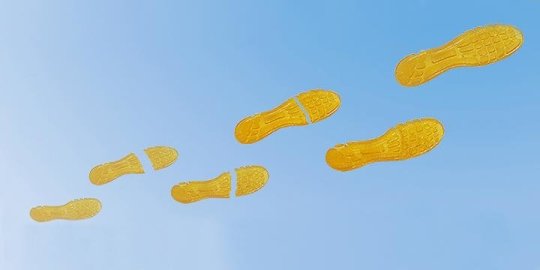[ad_1]
Instead of throwing away your broken boots or cracked toys, why not let them fix themselves? Researchers at the University of Southern California Viterbi School of Engineering have developed 3D-printed rubber materials that can do just that.
Assistant Professor Qiming Wang works in the world of 3D printed materials, creating new functions for a variety of purposes, from flexible electronics to sound control. Now, working with Viterbi students Kunhao Yu, An Xin, and Haixu Du, and University of Connecticut Assistant Professor Ying Li, they have made a new material that can be manufactured quickly and is able to repair itself if it becomes fractured or punctured. This material could be game-changing for industries like shoes, tires, soft robotics, and even electronics, decreasing manufacturing time while increasing product durability and longevity.
The material is manufactured using a 3D printing method that uses photopolymerization. This process uses light to solidify a liquid resin in a desired shape or geometry. To make it self-healable, they had to dive a little deeper into the chemistry behind the material.
Photopolymerization is achieved through a reaction with a certain chemical group called thiols. By adding an oxidizer to the equation, thiols transform into another group called disulfides. It is the disulfide group that is able to reform when broken, leading to the self-healing ability. Finding the right ratio between these two groups was the key to unlocking the materials’ unique properties.
“When we gradually increase the oxidant, the self-healing behavior becomes stronger, but the photopolymerization behavior becomes weaker,” explained Wang. “There is competition between these two behaviors. And eventually we found the ratio that can enable both high self-healing and relatively rapid photopolymerization.”
In just 5 seconds, they can print a 17.5-millimeter square, completing whole objects in around 20 minutes that can repair themselves in just a few hours. In their study, published in NPG Asia Materials, they demonstrate their material’s ability on a range of products, including a shoe pad, a soft robot, a multiphase composite, and an electronic sensor.
After being cut in half, in just two hours at 60 degrees Celsius (four for the electronics due to the carbon used to transmit electricity) they healed completely, retaining their strength and function. The repair time can be decreased just by raising the temperature.
“We actually show that under different temperatures — from 40 degrees Celsius to 60 degrees Celsius — the material can heal to almost 100 percent,” said Yu, who was first-author of the study and is studying structural engineering. “By changing the temperature, we can manipulate the healing speed, even under room temperature the material can still self-heal”
After conquering 3D-printable soft materials, they are now working to develop different self-healable materials along a range of stiffnesses, from the current soft rubber, to rigid hard-plastics. These could be used for vehicle parts, composite materials, and even body armor.
This study was published on February 1 and funded by the Air Force Office of Scientific Research Young Investigator Program (FA9550-18-1-0192) and National Science Foundation (CMMI-1762567).
Story Source:
Materials provided by University of Southern California. Note: Content may be edited for style and length.
[ad_2]















